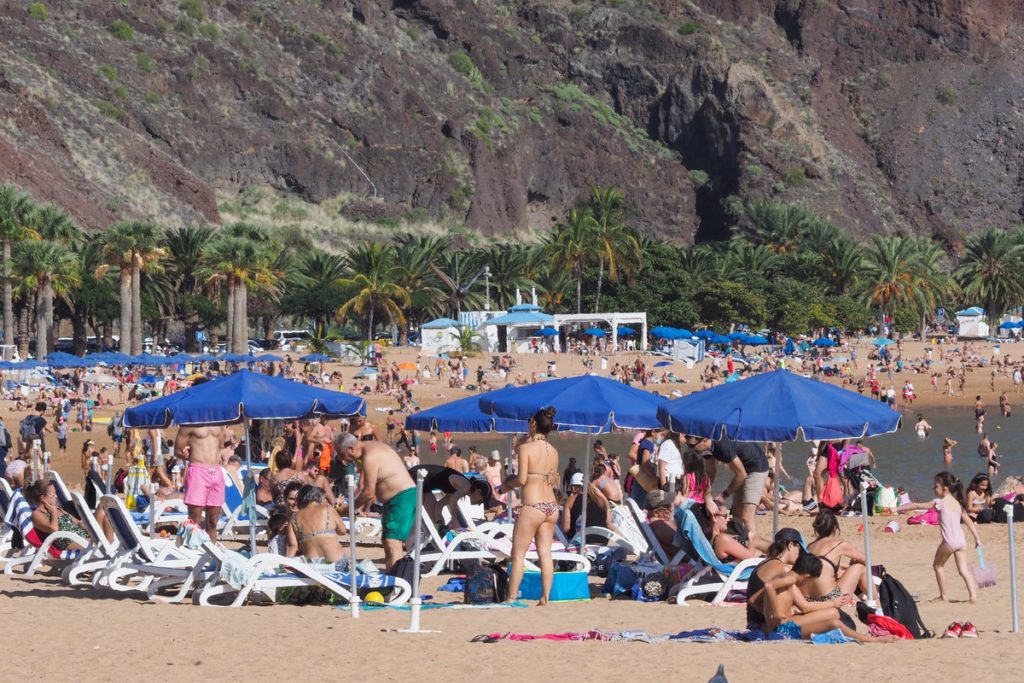
The irregular extraction of sand from Western Sahara to regenerate beaches or for construction can have harmful ecological effects both in the African deposit from which it is extracted and in its destination, several specialists have warned Efe.
Thus, the coordinator of natural resources of the Canarian Association of Friends of the Saharawi People (Acaps), Anselmo Fariña, has warned that “there is a notion that sand is an unlimited resource and more so if we talk about that of a desert like the Sahara”, but that is a wrong impression since in reality “we must think of it as a nonrenewable resource in the same way that water is.”
Nor is it inexhaustible, despite the fact that it may seem so, and in the case of the deposit in Western Sahara from which the sand that is later imported by the Canary Islands is extracted today, its capacity is “two million cubic meters”, according to Acaps.
This material is used “mainly in the cement industry and also in the regeneration of beaches”, especially in those of the western islands that “originally were black sand but they opted for the saharan sandwhich is blonde, to assimilate them to the most touristy ones such as Las Canteras in Gran Canaria”, Fariña points out.
Thus, the Las Teresitas beach in Tenerife received a first deposition of 270,000 tons, followed by up to three subsequent replenishments in 1988, 1999 and 2014, according to data held by Acaps, which denounces “a regular flow of sand traffic ” by Moroccan companies from the Saharawi port of El Aaiún to different points in the Canary archipelago.
“We know that the treatment of the sand originating in the Sahara is not adequate, but we have reported this situation to Seprona without receiving a response,” Fariña lamented.
Aurora Torres, co-author of the report “Sand and sustainability: 10 strategic recommendations to avoid a crisis”, published by the UN, is also aware of the subject. She points out in it the “potential danger” of this activity since “it can trigger the to introduce invasive alien species into the new ecosystem.
In addition to this risk, the regeneration of a beach with foreign material “has a considerable impact”, added the Oceana spokesman, Ricardo Aguilar, because the new sand produces greater erosion in the new ecosystem, especially if it is not appropriate. from the sea but from the continent”, which in turn requires “scheduling new regenerations more frequently”, added Ricardo Aguilar, spokesman for Oceana.
Aguilar also endorses the threat that extraction poses to the deposit itself since “deserts have their own ecological dynamics and, if we extract a lot of sand from them, we alter it.”
The transport of African sand is not only to the Canary Islands, since these experts have detected its transfer to the Portuguese town of Machico, on the island of Madeira, and also to the Balearic island of Mallorca, although in the latter case “the authorities environmental regulations vetoed its use in the construction of a golf course, which caused it to finally be used in the construction sector”.
For the Western Sahara Resources Observatory, sand trafficking is clearly illegal based on rulings, such as the one issued by the Court of Justice of the European Union in 2016, which “make it clear that Morocco cannot export the products of the Sahara as its own.” Occidental Sahara”.
“We have repeatedly written to the Civil Guard to prevent the unloading of that sand or even to check the documentation of origin of the merchandise, and they have answered us that this order would have to come from the EU,” laments Cristina Martínez, spokesperson of the observatory.













